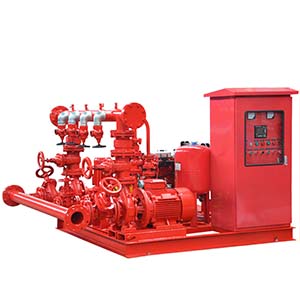How to solve the noise generated during the operation of the fire pump?
Fire pump noise is the irregular, intermittent, continuous or random noise generated by the fire pump during operation. So how to eliminate the noise problem of the fire pump?
First, reduce the impact of the fire pump rotor on the cylinder wall, control the noise At the beginning of fire pump design and production, reasonable calculation of tolerance tolerance and shape tolerance value, pay attention to reduce the thermal expansion of the rotary vane, avoid the rotation of the rotary vane and the groove, pay attention to the viscosity of the cold oil of the oil, then, in the line When separating the structure, the distance from the exhaust end point to the cut point is minimized, and the impact of the fire pump rotary vane on the cylinder wall can be effectively controlled, thereby reducing noise.
Second, reduce the impact of the fire pump valve plate on the valve seat and the support member, control the noise Generally speaking, during the use of the fire pump, if the amount of gas to be inhaled is large, the amount of circulating oil of the fire pump is large, the valve noise will be large, the valve jumps high, the valve area is large, and the valve piece noise is also large. Among them, in the case of noise, there is inevitably a influence of the valve material. For example, the rubber valve should have better noise than steel or laminate. Therefore, in order to reduce the impact of the fire pump valve plate on the valve seat and the support member, and control the noise, it is possible to select a reasonable valve material, and in addition, pay attention to the control of the oil intake, and also control the noise.
Third, reduce gas and oil emissions when impacting the oil baffle and other parts, control noise In the case of a fire pump, the rigidity of the part is insufficient or not tightened, causing vibration and collision, which increases the noise. To this end, the noise can be reduced, and the corresponding design improvement can be made where the parts are in contact. For example, the method of clamping rubber can avoid the collision noise caused by vibration.

